The 1925 Stone Mountain Half Dollar value ranges from $60 to over $15,000 depending on condition and features. Circulated coins typically worth around $60, while high-grade Mint State specimens can command $77 to $15,000+. Counterstamped versions may reach $1,500 or more. Made of 90% silver, the coin has a minimum melt value of approximately $17.12. Key value factors include grade/condition (most significant), presence of counterstamps, and silver content. Professional grading by recognized organizations like NGC is recommended for accurate valuation, especially for high-grade or counterstamped examples.
The 1925 Stone Mountain half dollar represents a fascinating chapter in American commemorative coinage, honoring the Confederate Memorial carved into Georgia’s famous granite mountain. With values spanning from $60 for circulated examples to over $15,000 for pristine specimens, understanding what makes these coins valuable can help collectors and inheritors determine if they’re holding a modest keepsake or a significant treasure. This guide breaks down the grading scales, error varieties, and market prices that define this historic commemorative piece.
Understanding the Stone Mountain Commemorative Issue
The United States Mint struck 1,314,709 Stone Mountain half dollars in 1925 at the Philadelphia facility, making this one of the higher-mintage classic commemoratives. Despite the substantial production, the coin carries no mint mark—a standard practice for Philadelphia-minted coins during this era. The absence of a mint mark doesn’t indicate an error or increase rarity; it’s simply the normal production standard.
These coins feature a 90% silver composition (10% copper), containing 0.36169 troy ounces of pure silver. At current silver prices hovering around $25 per ounce, the base melt value sits at approximately $17.12, establishing the absolute minimum worth regardless of condition. The obverse depicts Confederate generals Robert E. Lee and Stonewall Jackson on horseback, while the reverse shows an eagle perched on a cliff with “Memorial to the Valor of the Soldier of the South” inscribed around the rim.
The fundraising purpose behind these coins adds historical context to their value. Proceeds were intended to help finance the carving of the Confederate Memorial on Stone Mountain, though the project faced numerous delays and wasn’t completed until 1972—nearly five decades after the coins were issued.
Grading and Condition: The Primary Value Driver
Professional coin grading follows the Sheldon Scale, ranging from Poor (P-1) to Perfect Mint State (MS-70). For 1925 Stone Mountain half dollars, condition creates dramatic value differences that dwarf all other factors.
Circulated Grades (G-4 through AU-58):
- Good (G-4): $45-$55
- Very Good (VG-8): $50-$60
- Fine (F-12): $55-$65
- Very Fine (VF-20): $60-$75
- Extremely Fine (EF-40): $70-$90
- About Uncirculated (AU-50): $85-$110
- AU-58: $95-$130
Most circulated examples trade in the $60-$75 range, representing coins that saw actual use in commerce or were handled carelessly over the decades. Wear appears first on the high points—the horses’ legs and heads, the generals’ features, and the eagle’s breast on the reverse.
Mint State Grades (MS-60 through MS-67):
- MS-60: $110-$140
- MS-62: $130-$165
- MS-63: $150-$200
- MS-64: $210-$320
- MS-65: $400-$650
- MS-66: $1,200-$2,500
- MS-67: $5,000-$15,000
Heritage Auctions recorded an MS-67 example selling for $14,400 in January 2024, while PCGS CoinFacts shows MS-66 specimens consistently bringing $1,800-$2,200 at major auctions throughout 2023-2024. The jump from MS-65 to MS-66 represents a 200-300% value increase, reflecting the relative scarcity of coins with minimal bag marks and exceptional eye appeal.
Counterstamped Varieties: A Specialized Market
A significant number of 1925 Stone Mountain half dollars received additional stamping after leaving the mint—typically advertising messages, political slogans, or commemorative text applied by private parties. These counterstamps create a specialized collecting niche with its own valuation standards.
Common counterstamps include text like “Stone Mountain Memorial Association,” dates, or promotional messages. The value equation for counterstamped pieces differs dramatically from regular issues. A heavily worn coin with a clear, historically significant counterstamp might command $200-$500, while the same coin without the stamp would trade for $55-$65.
Premium counterstamped examples documented by APMEX include:
- 1925 with “SMMA” (Stone Mountain Memorial Association) deep stamp: $450-$750 in VF condition
- Political campaign counterstamps from 1920s: $300-$600
- Clear advertising stamps with readable business names: $200-$400
However, professional grading services like PCGS and NGC treat counterstamps as alterations, typically designating these coins as “Genuine—Details” rather than assigning numerical grades. GreatCollections auction data from 2023 shows counterstamped examples selling for 15-30% less than comparably worn non-counterstamped coins when the stamp is common or poorly struck.
For counterstamped coins to achieve premium values ($1,000-$1,500), they require three elements: historical significance to the stamp’s purpose, exceptional clarity of the stamping, and strong underlying coin condition. A collector specializing in Stone Mountain memorabilia might pay $1,200 for an AU-55 coin with a crisp, centered “Stone Mountain 1925” counterstamp, whereas a general commemorative collector would likely pass.
Documented Errors and Varieties Worth Seeking
Unlike many classic coins with famous error varieties (such as doubled dies or repunched mint marks), the 1925 Stone Mountain half dollar lacks widely recognized major errors. The single-year, single-mint production run limited opportunities for the dramatic varieties that excite error collectors.
That said, several minor varieties have been documented:
Die Polishing Lines: Some examples show raised lines in the fields from over-polishing of the dies during maintenance. These typically add $10-$25 to value in higher grades (MS-63+) where they’re most visible, appealing primarily to variety specialists.
Weak Strikes: Certain pieces exhibit weakness in the central details—particularly Lee’s and Jackson’s facial features. Rather than adding value, weak strikes reduce it by 10-20% compared to fully struck examples of the same grade. A weakly struck MS-64 might sell for $180 instead of the typical $210-$240.
Planchet Flaws: Occasional coins show lamination issues or planchet defects from the silver blank preparation. Small laminations visible under magnification might reduce value by 5-15%, while major planchet cracks or separations categorize the coin as a “Details” grade, limiting value to $80-$150 regardless of surface preservation.
Die Cracks: Light die cracks appear on some specimens, most commonly running through the legend or connecting devices. Minor cracks add modest interest ($5-$15 premium) for variety collectors but don’t significantly impact mainstream market value.
NGC’s Variety Plus database lists no major Stone Mountain varieties, and PCGS CoinFacts confirms the absence of significant doubled dies, repunched dates, or overdates. Collectors seeking errors would find better opportunities in other commemorative series like the 1936 Cincinnati or 1936 Elgin half dollars.
Market Trends and Investment Potential
The 1925 Stone Mountain half dollar market has shown consistent but modest appreciation over the past decade. Price tracking from major auction houses reveals several patterns worth noting for potential buyers.
Mid-grade examples (MS-63 to MS-64) appreciated approximately 25-30% from 2015 to 2024, slightly outpacing inflation but underperforming broader numismatic market sectors. A coin that sold for $160 in MS-63 condition in 2015 now brings $195-$210, representing about 2.5% annual appreciation.
Premium gem specimens (MS-66 and MS-67) showed stronger performance, with MS-67 coins appreciating roughly 60% over the same period. Stack’s Bowers documented an MS-67 selling for $9,000 in 2015; comparable pieces now reach $13,000-$15,000. However, only 25-30 examples have been certified at MS-67 by PCGS and NGC combined, making this a thin market with significant price volatility.
The circulated market remains stable and predictable. Common-date circulated commemoratives typically trade near melt value plus a modest premium, and Stone Mountain halves follow this pattern. The $60-$75 retail price for VF-EF coins has held steady for years, with fluctuations tied more to silver spot prices than numismatic demand.
Several factors influence current market dynamics:
Population Reports: PCGS has graded approximately 8,200 examples across all grades, with NGC adding another 6,800. The combined MS-65 and higher population exceeds 1,500 coins, indicating sufficient supply to meet collector demand at current price levels.
Collector Base: Classic commemorative half dollars attract steady but not explosive collector interest. The set consists of 144 major types (1892-1954), making completion achievable but requiring significant investment. Stone Mountain’s relatively affordable pricing in lower Mint State grades makes it accessible for type collectors.
Historical Controversy: The Confederate memorial theme has generated increased scrutiny in recent years. While this hasn’t demonstrably impacted values negatively (prices continue gradual appreciation), it may influence long-term demand compared to non-controversial commemoratives.
Selling Your 1925 Stone Mountain Half Dollar
Determining the optimal sales channel depends entirely on your coin’s grade and your timeline for liquidation.
For circulated examples (below MS-60), local coin shops offer immediate payment but typically at 50-70% of retail value—expect $35-$50 for a VF-EF coin. Online marketplaces like eBay provide better returns ($55-$75) but require listing effort, photography, and dealing with buyer protections that favor purchasers in disputes.
Lower Mint State pieces (MS-60 through MS-63) sell efficiently through established dealers. APMEX, JM Bullion, and similar major retailers purchase these coins at 75-85% of retail, offering $100-$140 for MS-62 examples with quick payment and no hassle.
High-grade specimens (MS-64+) warrant professional grading if not already certified. The $35-$45 grading fee becomes worthwhile when it unlocks hundreds or thousands in additional value. An MS-65 in a PCGS holder sells for $500-$650; the same coin raw might bring only $200-$300 because buyers discount ungraded coins heavily to account for grading risk.
For true gems (MS-66 and MS-67), consignment through major auction houses maximizes returns. Heritage Auctions, Stack’s Bowers, and Legend Auctions attract serious commemorative collectors willing to pay premium prices. Auction houses typically charge 10-20% seller’s fees but provide authentication, professional photography, and access to buyer pools that drive competitive bidding. An MS-67 consigned to Heritage’s monthly auction would likely realize $12,000-$15,000 after fees—substantially more than any dealer’s direct purchase offer.
Authentication and Professional Grading Services
Given the relatively modest values of most 1925 Stone Mountain half dollars, counterfeiting isn’t widespread. However, altered coins, questionable counterstamps, and overgraded raw coins present real risks to buyers.
Professional grading through PCGS or NGC provides third-party verification of authenticity and condition. For coins valued above $200, the investment makes economic sense. A $35 NGC grading fee on a potential MS-64 ($250-$300 value) provides certainty and marketability that justifies the cost.
The grading process takes 2-4 weeks for standard service, with expedited options available at higher cost. Coins receive tamper-evident holders displaying the grade, certification number, and guarantees against authenticity issues. PCGS and NGC both maintain online databases where buyers can verify certification numbers, adding security to secondary market transactions.
For counterstamped examples, grading expectations differ. Services will authenticate these pieces and verify they’re genuine 1925 Stone Mountain halves, but they’ll receive “Details” designations rather than numerical grades. The holder might read “Genuine—AU Details, Counterstamped,” acknowledging the alteration while confirming authenticity.
Self-assessment provides preliminary estimates before committing to professional grading. High-quality photographs compared to graded examples in auction archives help establish approximate grades. However, amateur grading tends toward optimism—coins self-assessed as MS-64 frequently grade MS-62 or MS-63 professionally. When in doubt about a potentially valuable piece, professional opinions from grading services or established dealers prevent costly mistakes.
Building a Stone Mountain Collection Strategy
Collectors approach the 1925 Stone Mountain half dollar from several angles, each requiring different acquisition strategies and budget allocations.
Type Collectors seeking one example for a classic commemorative set should target MS-63 to MS-64 grades, balancing eye appeal with affordability. Budget $175-$275 for a nice representative piece that displays full design details without significant marks. This grade range offers the best value proposition—coins look presentably attractive without commanding the premiums attached to gems.
Registry Set Competitors pursuing PCGS or NGC Set Registry rankings need MS-66 or MS-67 examples. This specialized pursuit requires patience and substantial capital. Expect to invest $1,500-$2,500 for an MS-66 and $12,000-$15,000 for the few available MS-67 specimens. Registry competition has intensified over the past decade, pushing premium-grade prices upward faster than the general market.
Silver Stackers viewing these coins primarily as precious metal holdings should purchase circulated examples near melt value. At $60-$65 for VF-EF coins containing $17 in silver, the numismatic premium runs about 250-280%. While higher than bullion rounds, the premium remains modest for a historic 100-year-old coin with collecting interest beyond metal content.
Counterstamp Specialists represent a niche but active collector group focused specifically on the various private stampings applied to Stone Mountain halves. Building a representative collection of different counterstamp types requires persistence hunting through dealer inventories and auction lots. Budget $200-$600 per piece for clear, interesting examples, recognizing that resale markets for these items remain narrower than for regular strikes.
What Your Stone Mountain Half Dollar Is Really Worth
For most inheritors discovering a 1925 Stone Mountain half dollar in a family collection, realistic expectations center around $60-$150. The typical coin spent decades in a drawer or album, accumulating light wear that places it in VF to AU grades. These pieces carry genuine historic and numismatic interest but fall short of significant financial value.
Coins with obvious luster—a frosty, mint-fresh appearance visible under good lighting—warrant closer examination. If details appear sharp with minimal contact marks, professional grading might reveal MS-63 or better condition worth $150-$300+. Comparing your coin to graded images in PCGS CoinFacts or NGC Coin Explorer helps gauge potential before investing in grading fees.
The truly valuable pieces—those MS-66 and MS-67 examples bringing four or five figures—represent only a tiny fraction of surviving coins. Exceptional preservation over nearly a century requires careful storage from day one, something few original purchasers maintained. If your coin exhibits strong eye appeal with brilliant surfaces and minimal marks under magnification, consultation with a professional dealer or grading service becomes essential to unlock potentially significant value.
Understanding these realistic value ranges prevents disappointment while ensuring you don’t accidentally sell a premium piece for common-coin prices. Whether your Stone Mountain half dollar proves worth $60 or $6,000, knowing what factors drive those valuations empowers informed decisions about selling, holding, or adding to your collection.
You may be interested:
- 1859 Indian Head Penny Coin Value Complete Errors List And No Mint Mark Worth Guide For Collectors
- 1911 V Nickel Coin Value Guide Complete Errors List And No Mint Mark Worth Today
- 1902 Dime Coin Value Complete Errors List With O S And No Mint Mark Worth Guide
- 1788 Quarter Coin Value Complete Guide Errors List And D S P Mint Mark Worth Revealed
- 1776 To 1976 Bicentennial Half Dollar Coin Value Complete Errors List And What Your D S And No Mint Mark Coins Are Actually Worth
- 1990 Penny Coin Value Errors List How D S And No Mint Mark Pennies Are Worth Thousands Of Dollars

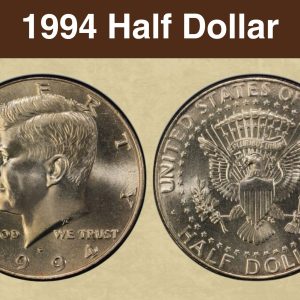
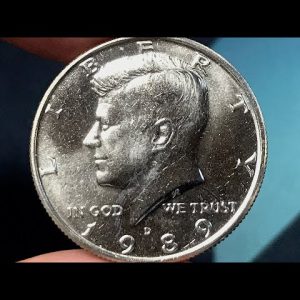
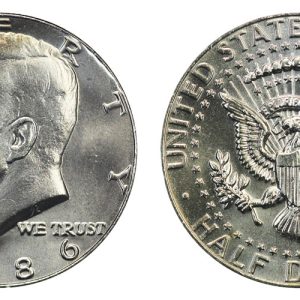
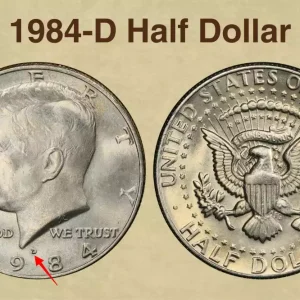
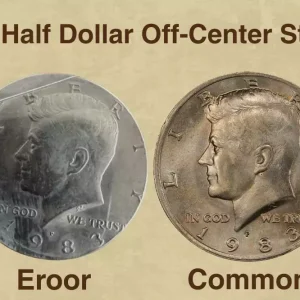
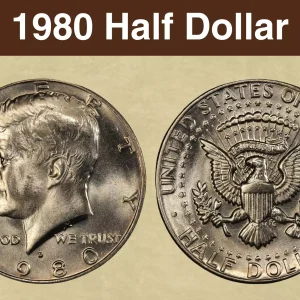
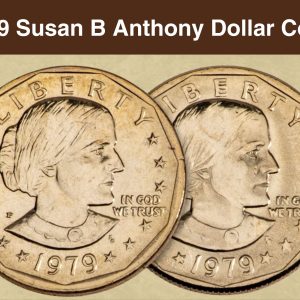
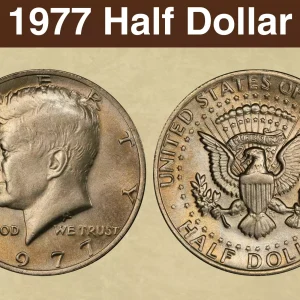
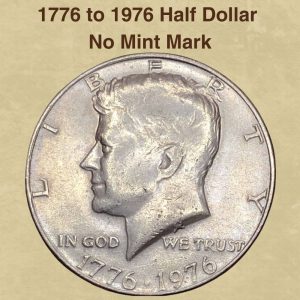
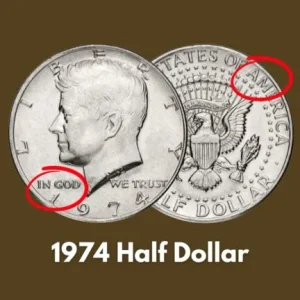
How much is a 1925 Stone Mountain half dollar worth?
The value of a 1925 Stone Mountain half dollar ranges from approximately $60 to over $13,000, depending on its condition and whether it has been counterstamped. A coin in average circulated condition may be worth around $60, while a coin in high Mint State (MS) could be worth thousands. The coin’s composition is 90% silver, and its silver melt value is about $17.12 as of October 3, 2025.
Where is the mint mark on a 1925 Stone Mountain half dollar?
The 1925 Stone Mountain half dollar does not have a mint mark because all coins were struck at the Philadelphia Mint, which did not use mint marks during that period.
How many 1925 Stone Mountain half dollars were made?
Of the 5,000,000 half dollars authorized, 2,310,000 coins were minted for sale. Approximately 1,310,000 sold and the remaining 1,000,000 were returned to be melted. Trivia: Recently deceased President Warren Harding was to be memorialized on the coin, but no portrait reference to him appears.
Is the 1925 Stone Mountain half dollar real?
The 1925 Stone Mountain half dollar has one of the largest mintages of any classic commemorative, with more than 1.3 million pieces struck. (The 1893 World’s Columbian Exposition half dollar is the only issue in this series with a higher mintage.)